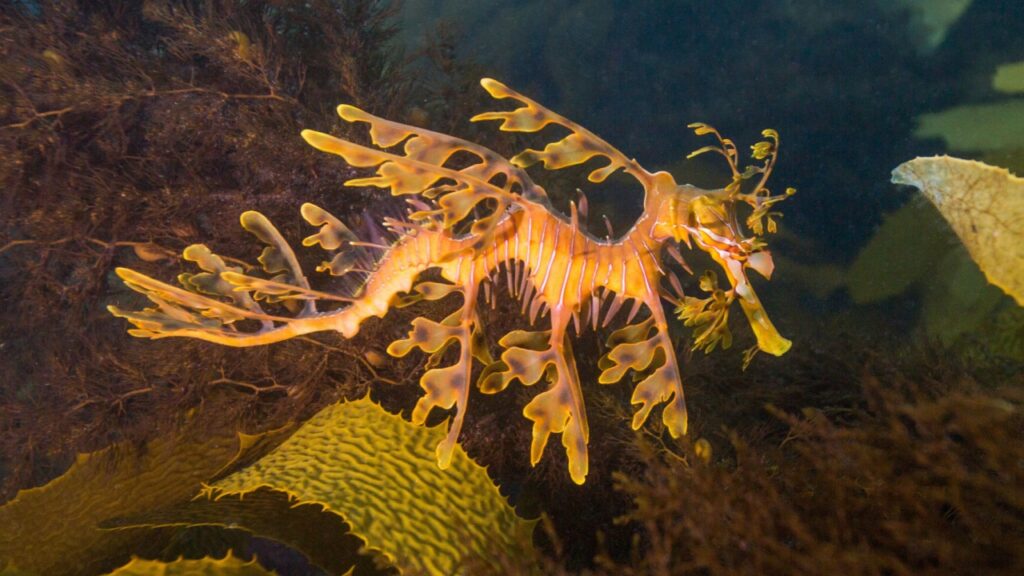Leafy sea dragons are some of the ocean’s most captivating creatures. These close relatives of seahorses look like something straight out of a fairy tale, with their leaf-like appendages and delicate features. Let’s dive into the fascinating world of these marine marvels and discover some truly amazing facts about them.
Masters of Disguise
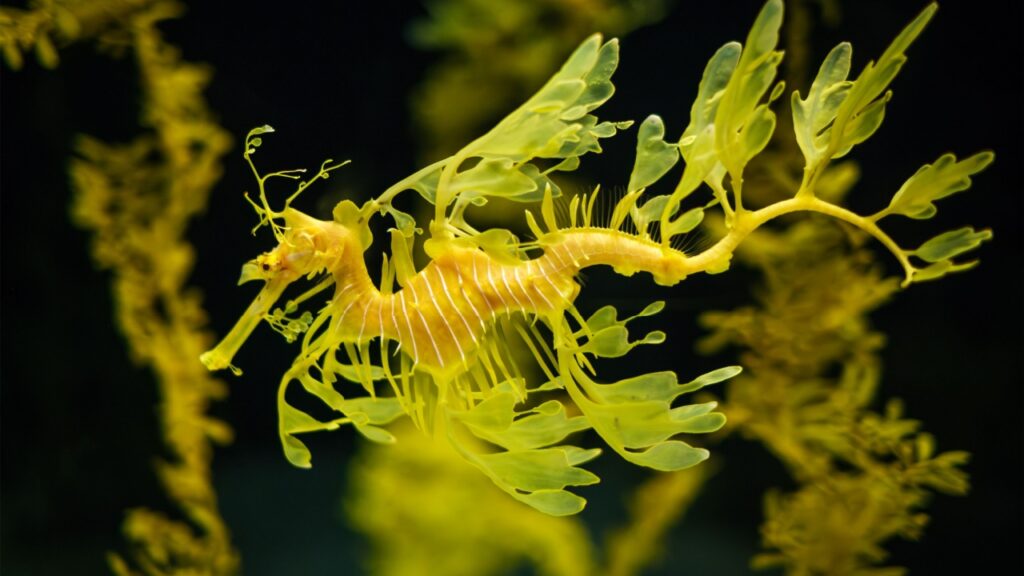
Leafy sea dragons are experts at blending in with their surroundings. Their bodies are covered in leaf-like appendages that look just like the seaweed they live among. This camouflage helps them hide from predators and sneak up on their prey. It’s so effective that sometimes even experienced divers have trouble spotting them in the wild.
Tiny but Mighty Hunters
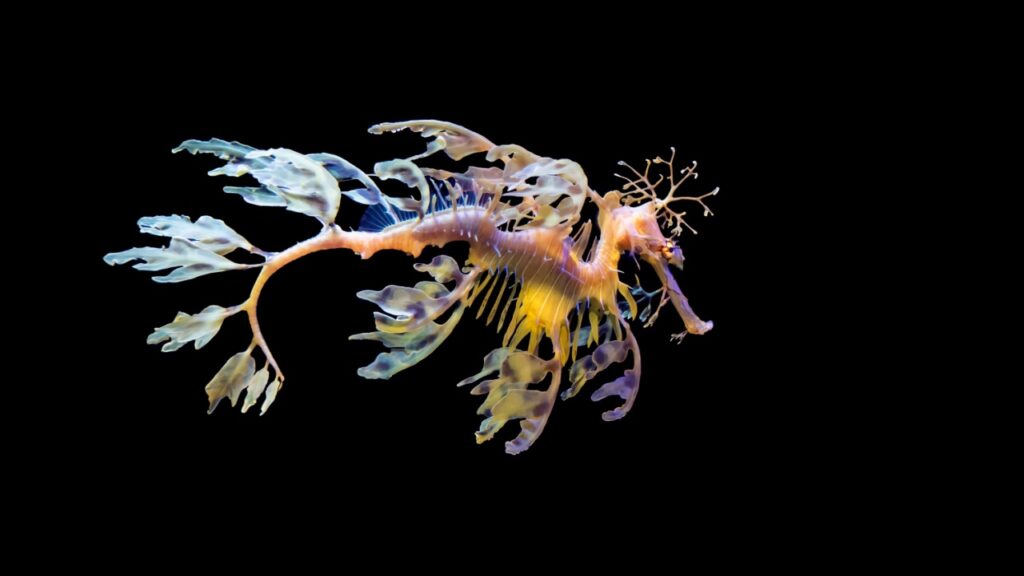
Despite their gentle appearance, leafy sea dragons are skilled predators. They feed on tiny crustaceans like mysid shrimp and sea lice. Using their long, tube-like snouts, they can suck up their prey in less than a second. They don’t have teeth, so they swallow their food whole.
Dance of the Sea Dragons
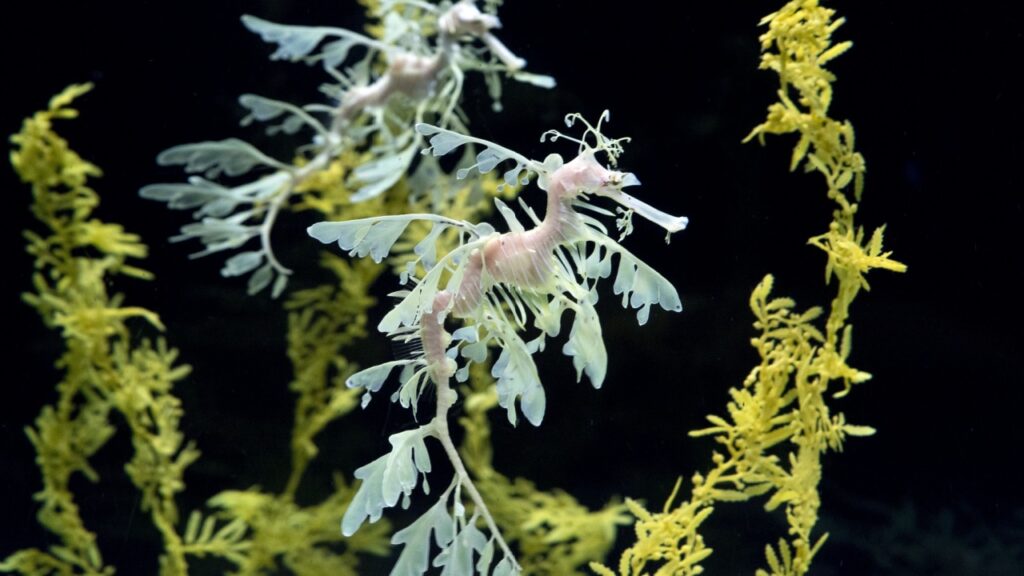
During mating season, leafy sea dragons perform an elaborate courtship dance. The male and female swim side by side, mirroring each other’s movements. This beautiful display can last for hours or even days. It’s a sight that few people ever get to witness in the wild.
Dads Do the Heavy Lifting
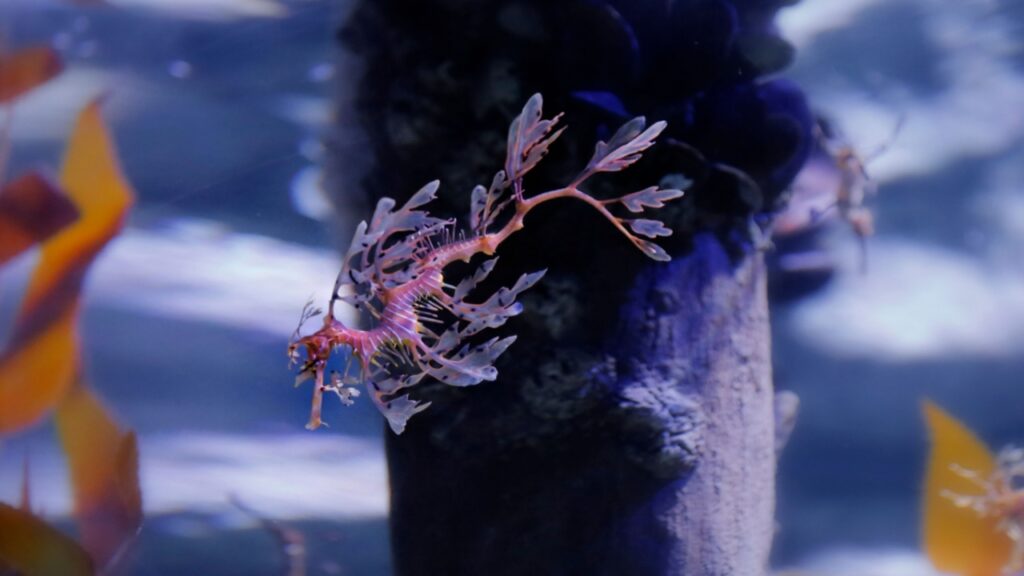
In the world of leafy sea dragons, it’s the males who carry the eggs. After the female deposits her bright pink eggs onto the male’s tail, he fertilizes them and carries them for about eight weeks. The eggs are attached to a special brood patch on his tail, where they’re kept safe until they hatch.
Rare and Endangered Beauties
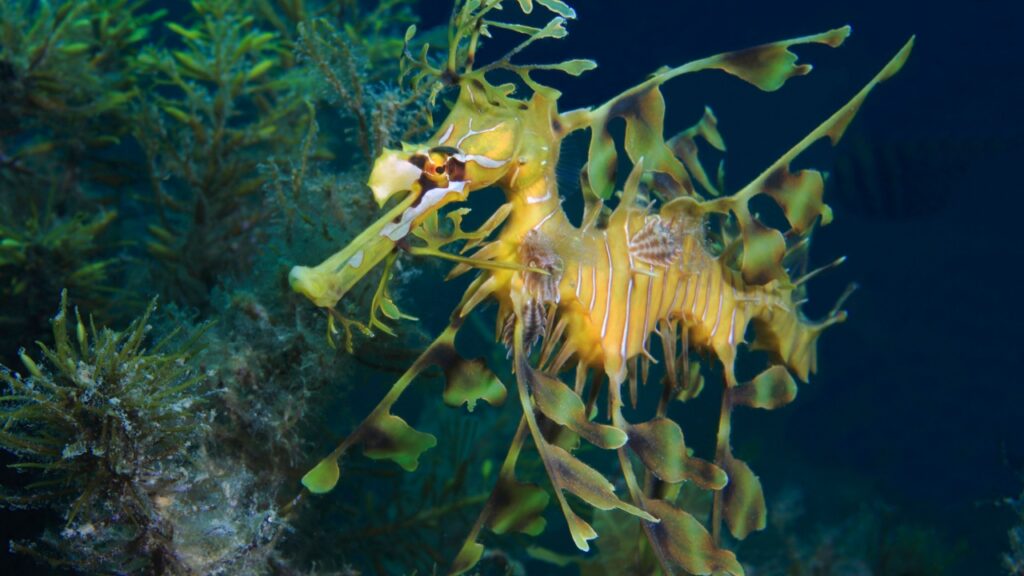
Leafy sea dragons are found only in the waters off southern Australia. Their limited range makes them vulnerable to habitat loss and other threats. They’re currently listed as Near Threatened by the IUCN Red List. Conservation efforts are underway to protect these unique creatures and their habitats.
Slow and Steady Swimmers
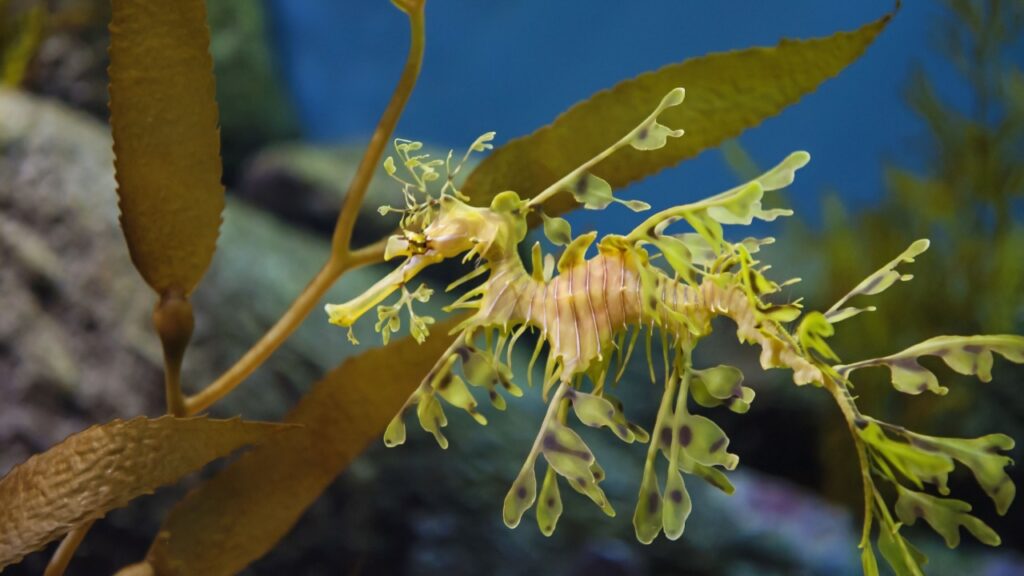
Unlike their seahorse cousins, leafy sea dragons can’t curl their tails to grab onto objects. Instead, they rely on their leaf-like fins to propel themselves through the water. They move slowly and gracefully, often appearing to float rather than swim. This gentle movement helps them conserve energy in their kelp forest homes.
Masters of Illusion
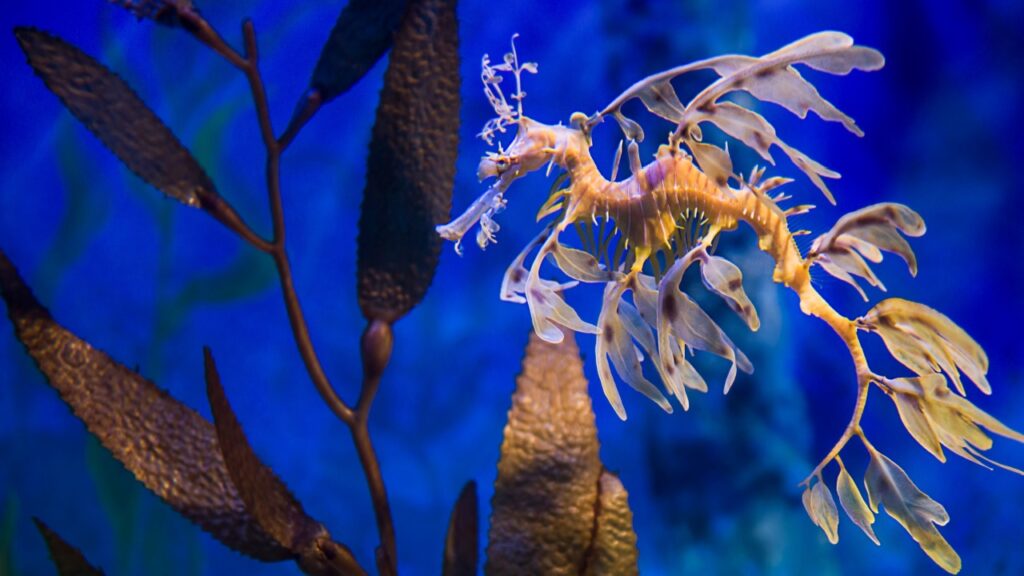
The leafy appendages on a sea dragon’s body aren’t just for show. They also help break up the outline of the fish, making it even harder for predators to spot them. As the sea dragon moves, these leaf-like structures sway gently, mimicking the movement of real seaweed in the current.
Growing Up Dragon
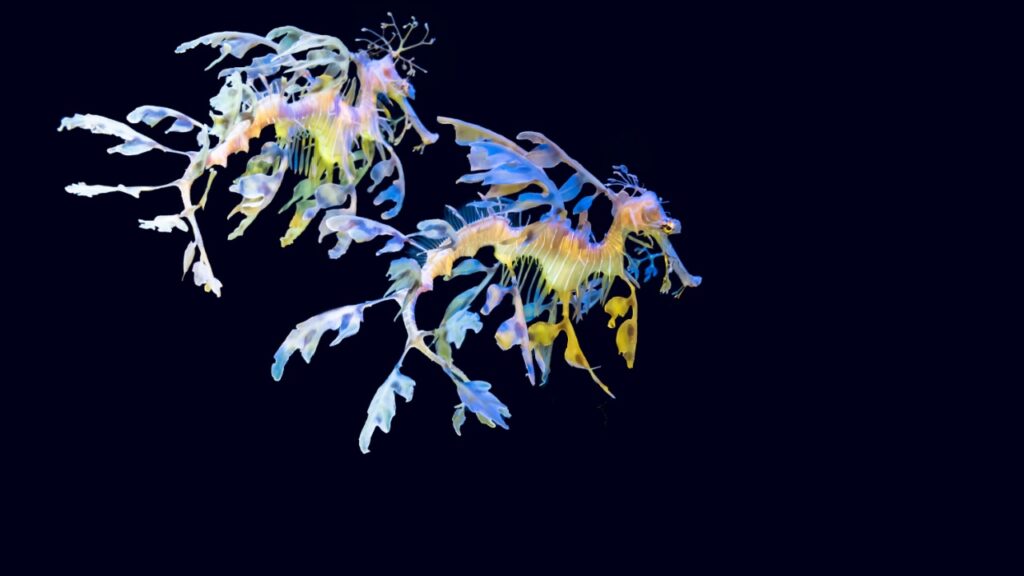
Baby leafy sea dragons, called fry, are incredibly tiny when they hatch. They’re only about 20 millimeters long, smaller than a paperclip. Despite their small size, they’re fully formed and ready to start hunting on their own. They grow quickly, reaching adult size in about two years.
A Face Only a Mother Could Love
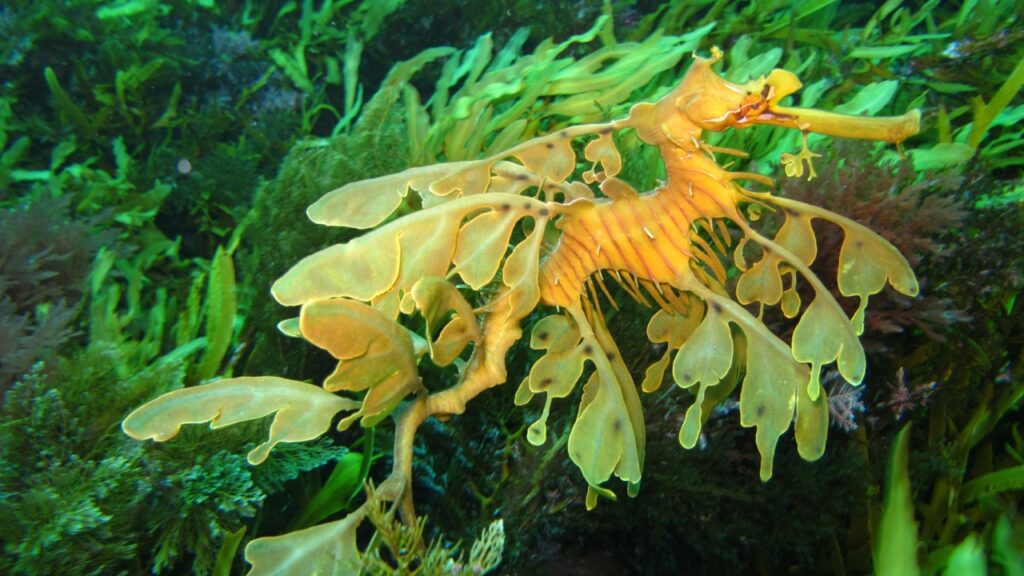
Leafy sea dragons have a unique face that some might call ugly, but others find endearing. They have a long, horse-like snout and bulging eyes that can move independently of each other. This allows them to keep an eye out for predators and prey in all directions.
Living Fossils
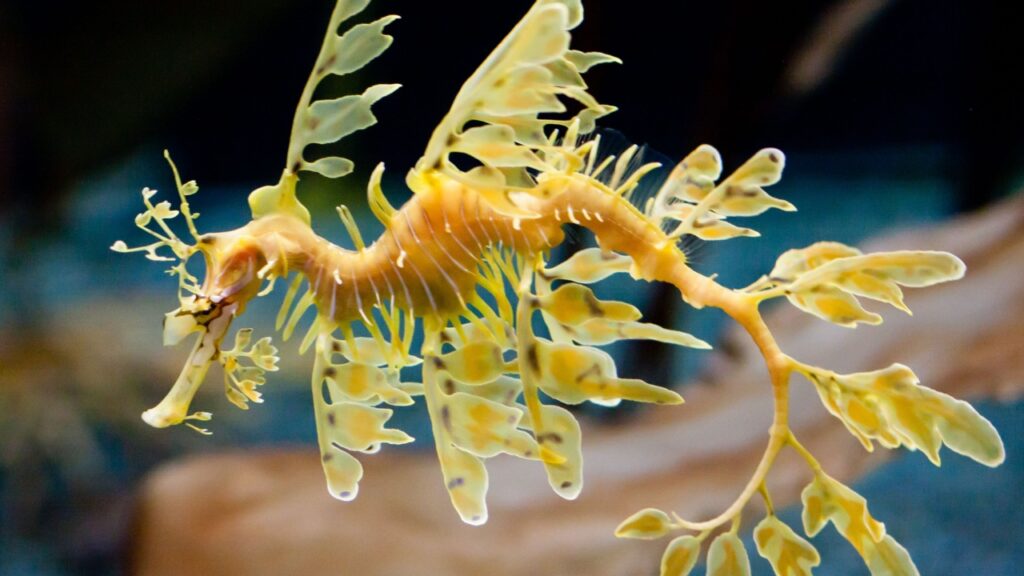
These fascinating creatures have been around for a long time. Fossil records show that sea dragons have existed for at least 50 million years. Despite changes in the ocean environment over time, they’ve maintained their distinctive appearance and lifestyle.
Picky Eaters
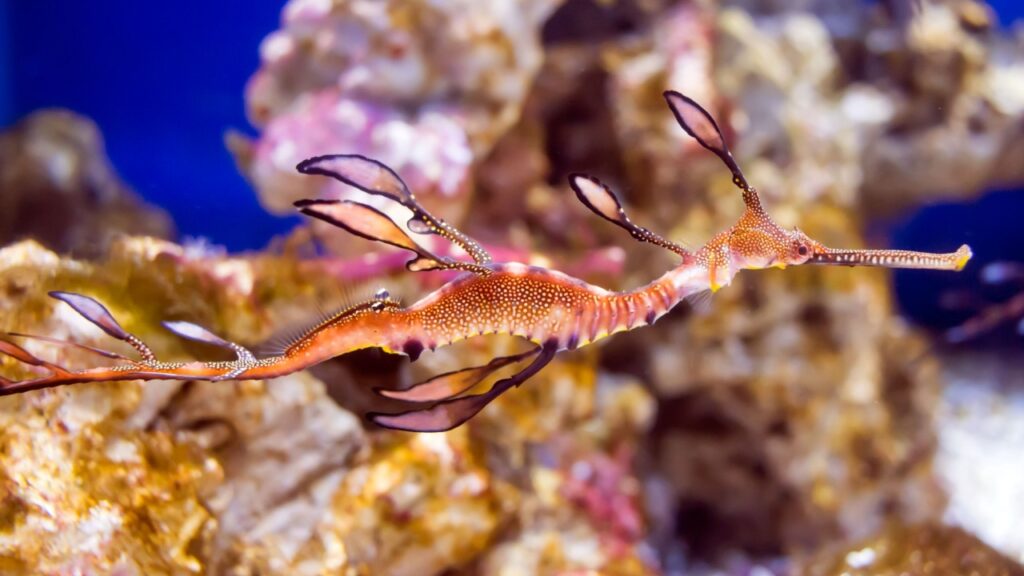
Leafy sea dragons have specific dietary needs. In the wild, they eat only live prey that they catch themselves. This makes them challenging to keep in captivity, as they won’t accept dead or frozen food. Aquariums that house leafy sea dragons need to maintain a constant supply of live food for them.
Silent but Deadly
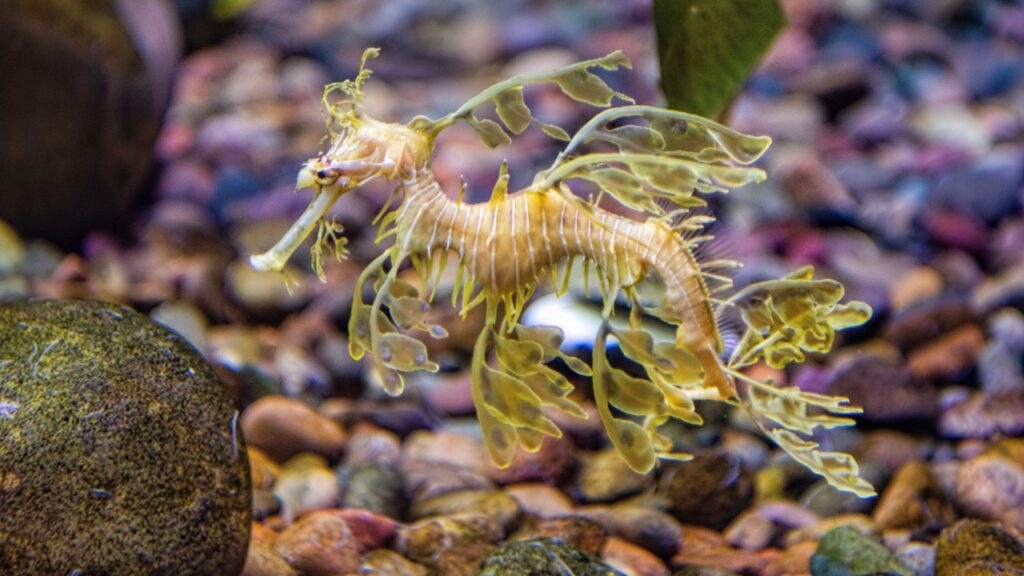
Unlike some fish species, leafy sea dragons don’t make any sounds. They rely entirely on their camouflage and slow movements to avoid predators. When threatened, they can change color slightly to blend in even better with their surroundings.
Gentle Giants
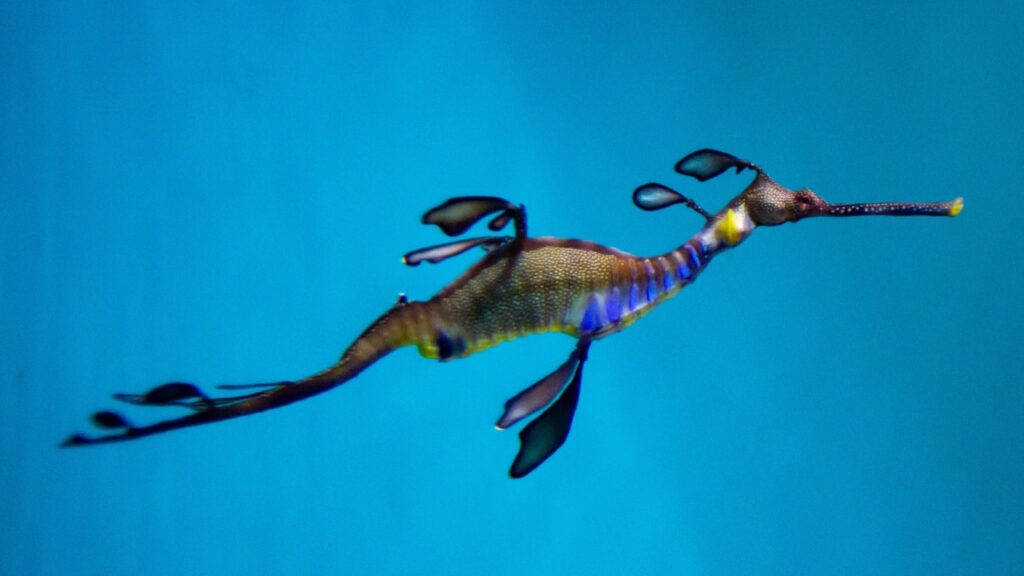
Although they’re called “dragons,” leafy sea dragons are actually quite small. Most adults grow to be about 20-24 centimeters long, about the size of a ruler. Despite their small size, they have a big impact on the marine ecosystems they inhabit.
No Bones About It
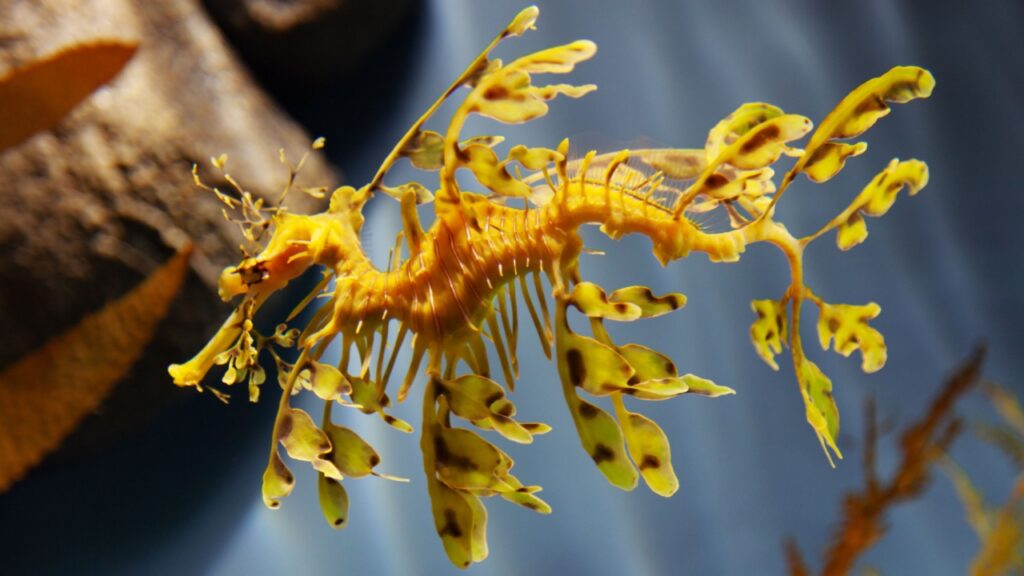
Like their seahorse relatives, leafy sea dragons don’t have a backbone. Instead, their bodies are supported by a series of bony plates just under their skin. This unique structure allows them to be flexible while still maintaining some protection from predators.
Cultural Icons
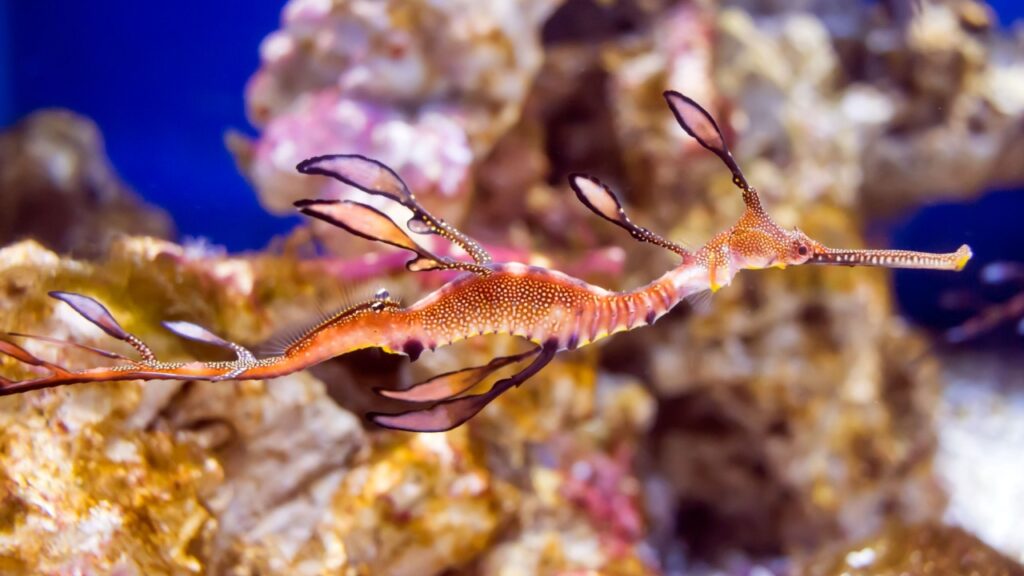
Leafy sea dragons have captured the imagination of people around the world. They’re featured in art, literature, and even video games. In Australia, where they’re found in the wild, they’re considered a symbol of marine conservation and are protected by law.
Becky is a fervent wildlife enthusiast and pet care expert with a diploma in canine nutrition. Her love for animals stretches beyond the domestic, embracing the wild tapestry of global fauna. With over a decade of experience in animal welfare, Becky lends her expertise to OutlandishOwl through insightful articles, captivating wildlife information, and invaluable guidance on pet nutrition. Her work embodies a deep commitment to understanding the intricate lives of animals and a passion for educating others on sustaining natural habitats. Becky's hands-on conservation efforts and her knack for translating complex dietary science into practical pet feeding tips make her an indispensable voice for creatures great and small.

